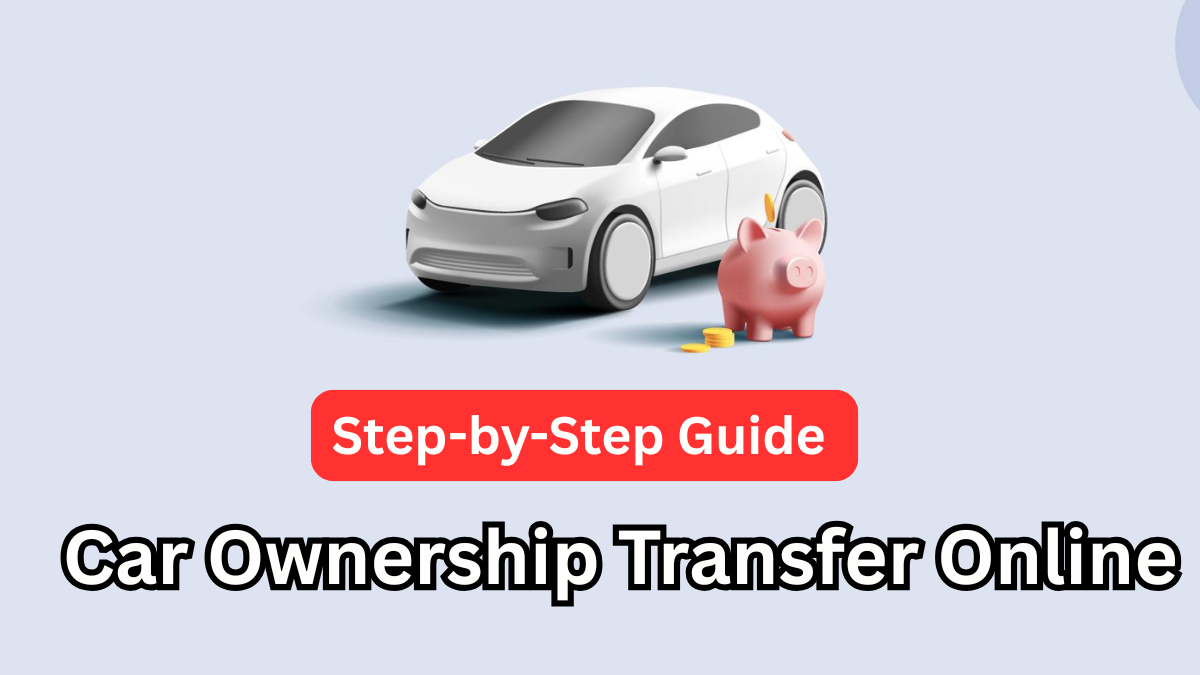In 2025, transferring car ownership in India has become simpler and faster thanks to digitalization. Whether you’re selling your car to a known buyer or going through a resale platform, it’s essential to complete the ownership transfer legally to avoid future complications.
If you’re wondering how the car ownership transfer India online system works today, you’re in the right place. Here’s a comprehensive and human-friendly guide that walks you through the entire RC transfer online India process.

Why You Need to Transfer Car Ownership
Transferring ownership is not just a formality—it’s a legal requirement. Here’s why it matters:
-
It frees you from future liabilities like traffic fines or accidents.
-
It ensures the new owner can register for insurance, fitness, and tax renewal.
-
It prevents fraud or misuse of your vehicle.
Documents Required for Car Ownership Transfer
Before diving into the online process, gather these essential documents to avoid delays.
| Document | Purpose |
|---|---|
| Form 29 & 30 | Application for transfer of ownership |
| RC (Registration Certificate) | Proof of ownership |
| Insurance certificate | Valid insurance for vehicle |
| PUC certificate | Pollution Under Control compliance |
| Address proof of buyer | Verification of new owner |
| Passport-size photographs | For application |
| Sale agreement | Proof of transaction |
| NOC (if applicable) | If the car is from another RTO or under loan |
These are crucial for a seamless sell car document process.
Step-by-Step Guide to RC Transfer Online India
Let’s walk through the actual steps involved in transferring your car’s ownership online.
Step 1: Visit the Parivahan Sewa Portal
Go to the official Parivahan website, which is the Ministry of Road Transport and Highways’ official portal for vehicle-related services.
Step 2: Select ‘Vehicle Related Services’
-
Choose your state and respective RTO.
-
Log in using your credentials or create an account.
Step 3: Choose ‘Transfer of Ownership’
Under the available services, click on ‘Transfer of Ownership’.
Step 4: Enter Vehicle Details
You will need to input:
-
Vehicle registration number
-
Chassis number (last 5 digits)
-
Engine number
This validates your car under the RC transfer online India process.
Step 5: Upload Required Documents
Upload scanned copies of all the documents listed above.
Make sure they are:
-
Legible
-
Within file size limits
-
In PDF or JPG format
Step 6: Pay the Transfer Fee Online
You’ll be redirected to the payment gateway. Fees vary by state and vehicle type (usually ₹300–₹500).
Step 7: Schedule and Complete Vehicle Inspection
You may be called for a physical inspection at your local RTO. Carry original documents for verification.
Step 8: Receive Updated RC
Once verified, you’ll receive the new RC in the buyer’s name either:
-
Digitally (via DigiLocker or Parivahan)
-
Physically (via post)
That’s it! The car ownership transfer India online is officially complete.
Important Tips for Sellers and Buyers
Here are a few quick tips to keep things smooth:
For Sellers:
-
Always retain a copy of the signed sale agreement.
-
Keep proof of NOC if the car was under finance.
-
Inform the insurance provider post-sale.
For Buyers:
-
Check for outstanding fines or challans before purchasing.
-
Ensure the vehicle has no pending loans or hypothecation.
-
Apply for insurance transfer immediately after RC transfer.
Cost Breakdown for Car Ownership Transfer
| Item | Estimated Cost (₹) |
|---|---|
| Application fee | ₹300 – ₹500 |
| Smart card RC fee (if applicable) | ₹200 – ₹400 |
| Hypothecation removal (if needed) | ₹100 – ₹200 |
| Miscellaneous (notary, photocopies) | ₹100 – ₹300 |
Frequently Asked Questions (FAQs)
1. Can I transfer car ownership without visiting the RTO?
Answer: While most steps can be completed online via the Parivahan portal, physical inspection or submission may still be required at the RTO, especially for document verification or if the car is from a different state.
2. How long does the RC transfer online India process take?
Answer: The process usually takes 7–14 working days, depending on the RTO workload and document accuracy.
3. Is it mandatory to get a No Objection Certificate (NOC)?
Answer: Yes, if the car is registered in a different RTO or is under a loan agreement, you need an NOC from the respective authority or bank.
4. What happens if I don’t transfer ownership after selling the car?
Answer: You remain legally liable for any accidents, penalties, or criminal activities involving the car. This is why the sell car document process is crucial to complete as soon as the sale is done.
Final Thoughts
Transferring vehicle ownership in India is no longer a tiresome ordeal. With the 2025 digital upgrades, car ownership transfer India online has become more transparent and accessible. Just ensure you have all your documents in place and follow each step carefully.
Click here to learn more
Pari is a passionate writer known for captivating stories that blend imagination and reality. Inspired by travel, history, and everyday moments, Pari crafts narratives that resonate deeply with readers.




